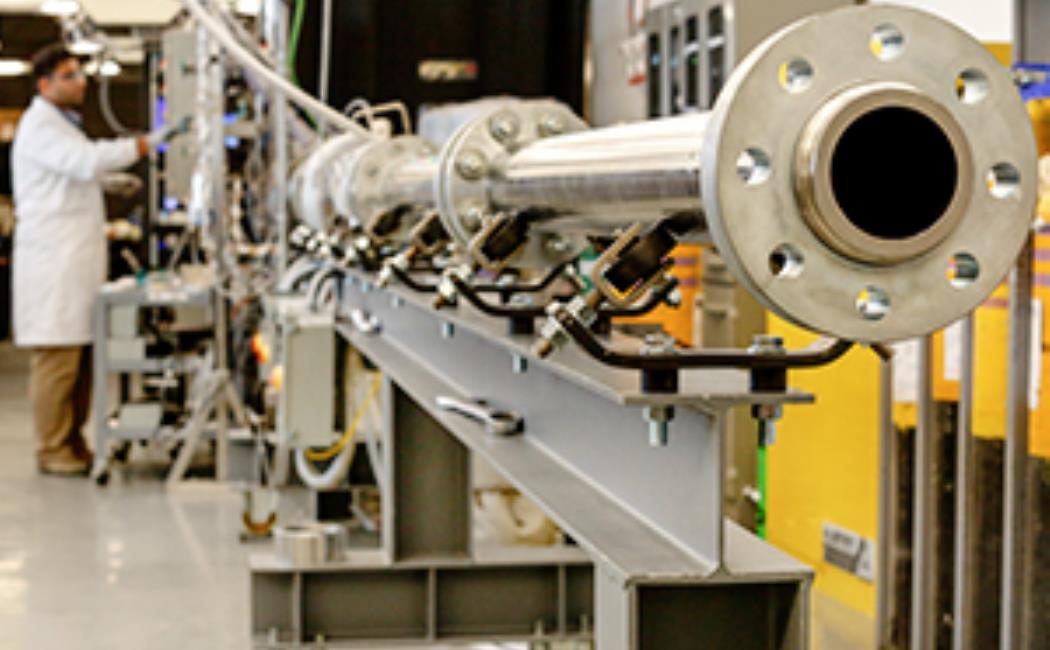



A shock tube compresses (and heats) a fuel mixture almost instantaneously and is used to study the chemical kinetics of various fuels under homogeneous conditions of temperature and pressure.
The shock tube is primarily composed of a driver and driven section which are separated by a diaphragm. The driven section contains the gas mixture of interest The driver section is pressurized with an inert gas until the diaphragm ruptures, thereby creating a shock wave that travels through the test gas in the driven section. The test gas is heated and pressurized almost instantaneously by the incident shock wave and further compression and heating happens by the shock wave reflected from the end-wall of the shock tube.
The KAUST low pressure shock tube is about 18 meters long and has an internal diameter of 14 cm. It can provide post-shock temperatures ranging from 500 - 4000 K and pressure over 1 - 20 bar. The KAUST high pressure shock tube is about 14 meters long and 4 inches in diameter. It can achieve post-shock pressures as high as 100 bar.